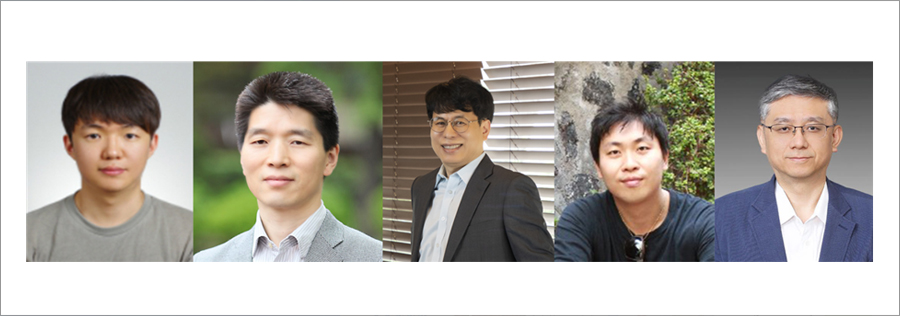Department of Physics co-researchers presented a new solution to the supergiant black hole formation bottleneck problem

- University of Seoul's Department of Physics, Korea Astronomy and Space Science Institute, and Jungwon University Joint Research
- Resolved by rotational energy transfer to ultra-light dark matter
- Looking forward to understanding the formation of super massive black holes and the role of dark matter
The University of Seoul (President Won Yong-gul) announced that a joint research team from University of Seoul, the Korea Astronomy and Space Science Institute, and Jungwon University has presented a new solution to the "final parsec" problem that occurs in the process of forming super massive black holes. The study presented the possibility of solving the bottleneck problem of black hole formation using "ultra-light dark matter" for the first time, and was published in the international journal Physics Letters B.
The "final parsec" problem refers to a phenomenon in which the two black holes cannot get any closer at a distance of about 1 parsec (about 3.26 light-years). In the existing theory, black holes need stars or gas around them to get closer to each other, but at a distance of 1 parsec, they can't get any closer because there are very little of them.

▲ A schematic diagram of an orbiting supergiant black hole binary star
The researchers suggested that ultra-light dark matter could solve this problem. Ultra-light dark matter is composed of very light particles, which does not move individually but as a group like a huge wave. This compensates for the shortcomings of existing cold dark matter.
The researchers calculated the time when the orbital radius of the black holes decreases due to dynamic friction when a pair of super massive black holes rotates in a dense mass (spike) of ultra-light dark matter and confirmed through simulation that this phenomenon is possible within 1 billion years. The black hole binary rotating in the ultra-light dark matter spike transmits rotational energy to the dark matter wave through dynamic friction, reducing the orbital radius of the black holes.
If ultra-light dark matter is the final solution to the Pacek problem, its characteristics can be confirmed indirectly by observing the rotational speed of a black hole or gravitational waves generated during a black hole collision. This is expected to affect the joint evolution of super massive black holes and galaxies, as well as the study of gravitational wave observation.

▲ (From left, Koo Hyun-mo from University of Seoul, physics Ph.D. student, University of Seoul professor Park Dong-soo, professor Park In-gyu, researcher Hong Seong-wook from Korea Astronomy and Space Science Institute, and Professor Lee Jae-won from Jungwon University)
The first author of this research paper is Ph.D. student in the Department of Physics in University of Seoul, Koo Hyun-mo. It is co-authored by Professor Dong-soo Park of University of Seoul, Professor Park In-kyu of Korea Astronomy and Space Science Institute, and Professor Lee Jae-won of the Department of Electrical and Electronic Engineering at Jungwon University participated as the corresponding author.
Lee Jae-won, a professor at Jungwon University, said, "There is fierce competition on which model will better explain galaxy structure, black hole, and gravitational wave observation between ultra-light dark matter and self-interacting dark matter.“
University of Seoul professor Park Dong-soo said, "This study, coupled with the observations of the James Webb telescope, has important implications for solving the evolution of super massive black holes.“
This study was carried out with the leading technology exploration international joint research project of the National Institute of Land, Infrastructure and Transport, the post-doctoral domestic training project supported by the Ministry of Science and ICT and the Korea Research Foundation, and the Ministry of Land, Infrastructure and Transport's smart city innovation talent development project.







